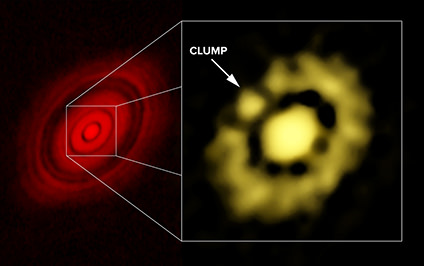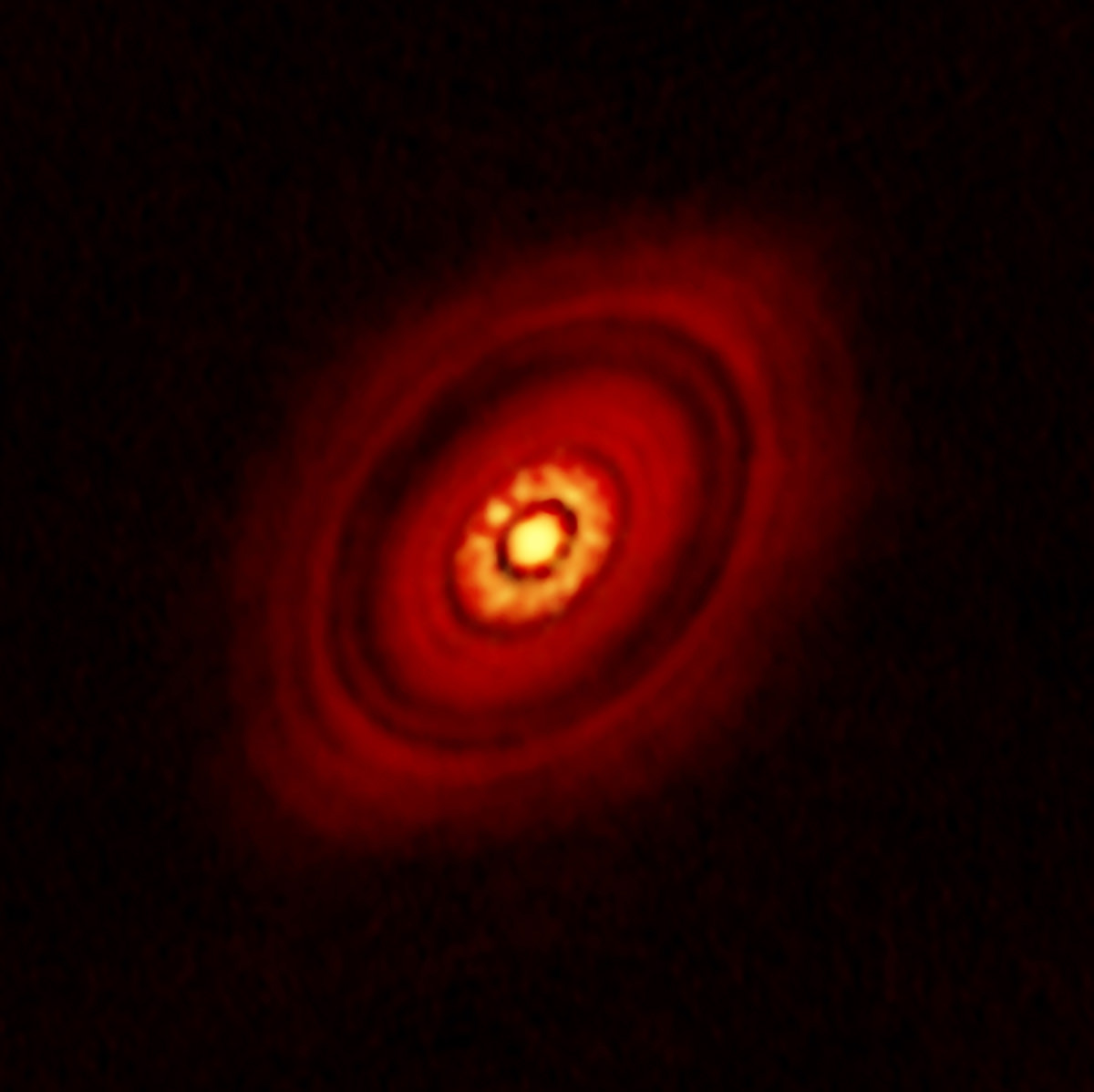The currently accepted theory of planet formation goes like this: clouds of gas and dust are compressed or begin to draw together. When enough material clumps together, a star is formed and begins fusion. As the star, and its cloud of gas and dust rotate, other clumps of matter coagulate within the cloud, eventually forming planets. Voila, solar system.
There’s lots of evidence to support this, but getting a good look at the early stages of planetary formation has been difficult.
But now, an international team of astronomers using the Karl G. Jansky Very Large Array (VLA) have captured the earliest image yet of the process of planetary formation. “We believe this clump of dust represents the earliest stage in the formation of protoplanets, and this is the first time we’ve seen that stage,” said Thomas Henning, of the Max Planck Institute for Astronomy (MPIA).
This story actually started back in 2014, when astronomers studied the star HL Tau and its dusty disk with the Atacama Large Millimetre/sub-millimetre Array (ALMA.) That image, which showed gaps in HL Tau’s proto-planetary disk caused by proto-planets sweeping up dust in their orbits, was at the time the earliest image we had of planet formation. HL Tau is only about a million years old, so planet formation in HL Tau’s system was in its early days.
Now, astronomers have studied the same star, and its disk, with the VLA. The capabilities of the VLA allowed them do get an even better look at HL Tau and its disk, in particular the denser area closest to the star. What VLA revealed was a distinct clump of dust in the innermost region of the disk that contains between 3 to 8 times the mass of the Earth. That’s enough to form a few terrestrial planets of the type that inhabit our inner Solar System.

“This is an important discovery, because we have not yet been able to observe most stages in the process of planet formation,” said Carlos Carrasco-Gonzalez from the Institute of Radio Astronomy and Astrophysics (IRyA) of the National Autonomous University of Mexico (UNAM).
Of course the star in question, HL Tau, is interesting as well. But the formation and evolution of stars is much more easily studied. It’s our theory of planet formation which needed some observational confirmation. “This is quite different from the case of star formation, where, in different objects, we have seen stars in different stages of their life cycle. With planets, we haven’t been so fortunate, so getting a look at this very early stage in planet formation is extremely valuable,” said Carrasco-Gonzalez.


Here’s a link to the paper:
http://arxiv.org/pdf/1603.03731v1.pdf
Thanks! =)